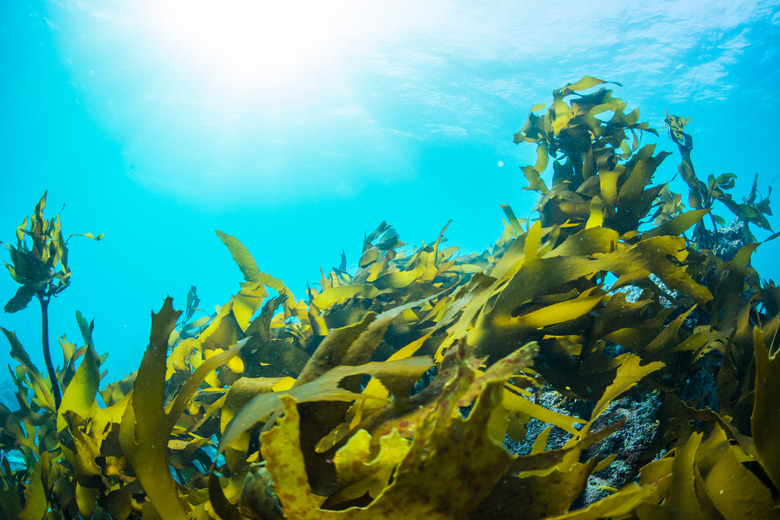What Kingdoms Are Heterotrophic & Autotrophic?
Only animals and fungi, as classes in the taxonomic class of kingdom, universally obtain their carbon from organic sources universally, a method called heterotrophism. Members of the plant kingdom practice autotrophism, obtaining carbon from the air. The remaining kingdoms have species that use either strategy. Depending on which classification system is being used, biologists divide life up into either five or six kingdoms, the six-kingdom system splitting the prokaryote grouping into bacteria and archaea. The other kingdoms are animals, plants, fungi, and protists.
TL;DR (Too Long; Didn't Read)
Heterotrophs take their food in from their environments, while autotrophs create their own. Animals and fungi fall into the first category, while plants fall into the latter: the remaining taxonomic kingdoms have members that exist in both category.
Heterotrophism and Autotrophism Defined
Heterotrophism and Autotrophism Defined
The word heterotroph comes from the Greek "heteros," which means "other" or "different," and "trophe," which means "nutrition." Heterotrophs get their food from organic sources in their environment. This means eating or absorbing sources of organic carbon. All animals and fungi are heterotrophs.
Autotrophs, on the other hand, that create their own food by fixing carbon. In other words, autotrophs get their carbon directly from carbon dioxide, which they use to create organic carbon compounds for use in their own cells. All plants and some bacteria, archaea, and protists obtain their carbon in this way.
Types of Heterotrophs
Types of Heterotrophs
Scientists divide heterotrophs into two basic categories: photoheterotrophs and chemoheterotrophs. Photoheterotrophs still get their carbon from organic sources, but they also get energy from sunlight. This grouping includes certain types of green bacteria and purple bacteria. Chemoheterotrophs, also called organotrophs, get both their energy and their carbon from organic sources. Animals and fungi fall into this category.
Types of Autotrophs
Types of Autotrophs
Likewise, scientists split the autotroph classification into photoautotrophs and chemoautotrophs. The former, including plants and algae, perform photosynthesis using the energy from light to fix carbon. Chemoautotrophs, which are mostly bacteria and archaea living in extreme environments such as near volcanic vents on the ocean floor, get the energy to fix carbon from inorganic sources like hydrogen sulfide or ammonia.
Cite This Article
MLA
Moll, Eric. "What Kingdoms Are Heterotrophic & Autotrophic?" sciencing.com, https://www.sciencing.com/kingdoms-heterotrophic-autotrophic-8371763/. 19 April 2018.
APA
Moll, Eric. (2018, April 19). What Kingdoms Are Heterotrophic & Autotrophic?. sciencing.com. Retrieved from https://www.sciencing.com/kingdoms-heterotrophic-autotrophic-8371763/
Chicago
Moll, Eric. What Kingdoms Are Heterotrophic & Autotrophic? last modified March 24, 2022. https://www.sciencing.com/kingdoms-heterotrophic-autotrophic-8371763/
